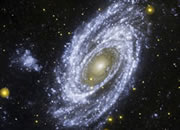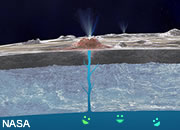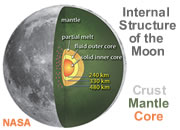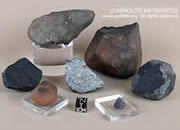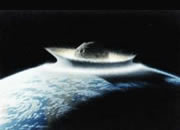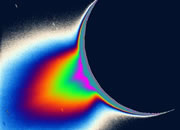Home » Astronomy » Geology of Pluto
The Geology of Pluto
"Pluto is showing us a diversity of landforms and complexity of processes that rival anything we've seen in the solar system." - Alan Stern, New Horizons Principal Investigator.
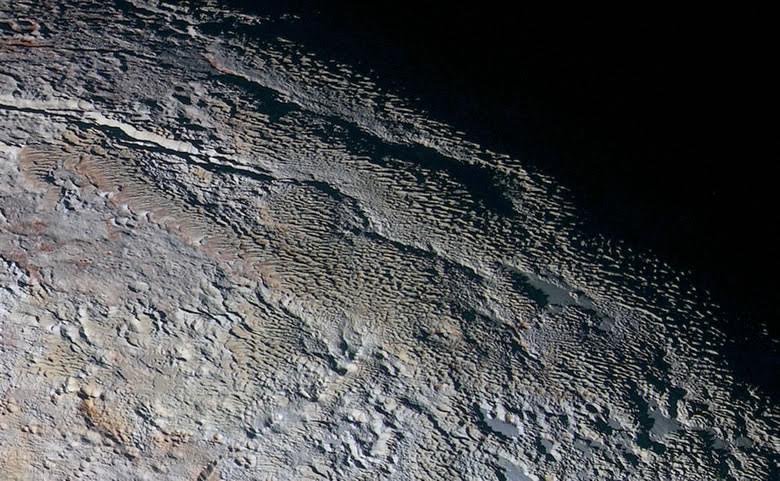
Snakeskin topography on Pluto: Scientists at NASA don't know how to interpret the geology of a recent image of Pluto that shows a 300-mile-wide scan of landscape. William McKinnon, Geology, Geophysics and Imaging team deputy lead, said "It looks more like tree bark or dragon scales than geology. This'll really take time to figure out; maybe it's some combination of internal tectonic forces and ice sublimation driven by Pluto's faint sunlight." Enlarge image.

Glacier on Pluto: Valley glaciers, probably composed of nitrogen ice, flow out of a mountainous area on the right side of this image and onto a flat plain of nitrogen ice that is known as the Sputnik Planum. The sides of the valleys are marked with opposing red arrows. The blue arrows outline the outflow margin of the glacier. Image by NASA, released on September 17, 2015. Enlarge image.
ADVERTISEMENT
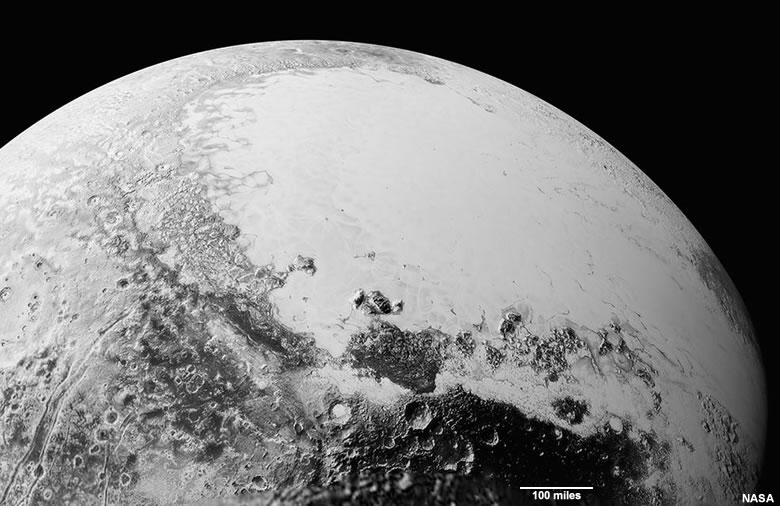
Detailed image of Pluto: Early detailed images of Pluto from NASA's New Horizons spacecraft reveal a variety of surprising and complex landforms and features. This view, which spans about 1100 miles across Pluto, was made from a mosaic of high-resolution images. It shows much of Pluto's northern hemisphere. The dominant area in this image is the great, smooth, icy plain, known as the "Sputnik Planum," which occupies most of the right side of this image. It is thought to be covered with nitrogen ice flows. It is thought to be a relatively young feature because it has very few impact craters. South of Sputnik Planum and along the bottom margin of the image is a dark, heavily impact-cratered area named "Cthulhu Regio." It contrasts with Sputnik Planum in both its topography and age. Crater density is so high that they overlap one another. Image by NASA, acquired on July 14, 2015. Enlarge image.

Sputnik Planum: This image is a view of the Sputnik Planum ice plain from almost directly overhead. The ice plain appears to be divided into a large number of smaller polygons and is surrounded by a diversity of landforms. Image by NASA, acquired on July 14, 2015. Enlarge image.
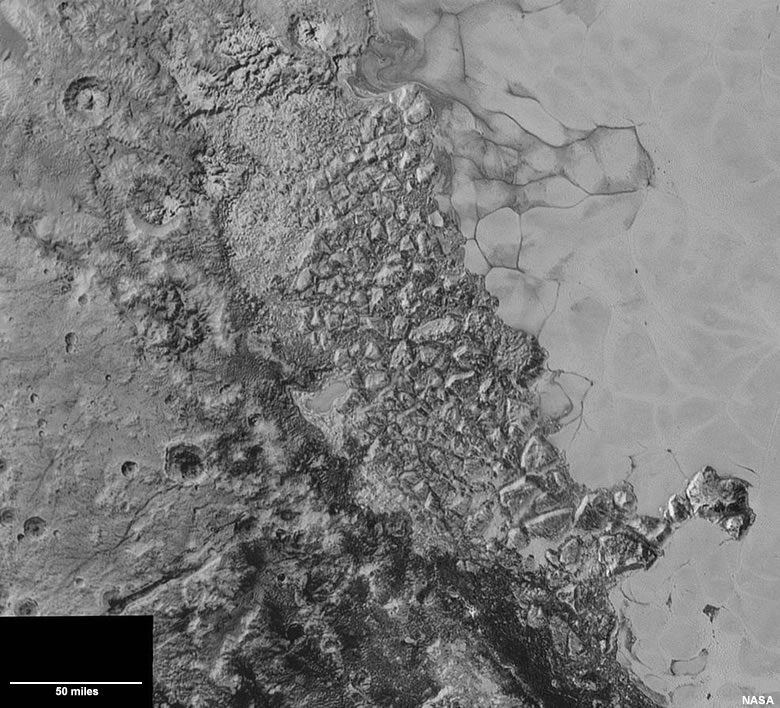
Western edge of Sputnik Planum: This image shows the western edge of Sputnik Planum. It shows the underlying polygonal structure of Sputnik Planum and an area described by the NASA team to be "randomly jumbled mountains that might be huge blocks of hard water ice floating in a vast, denser, softer deposit of frozen nitrogen." The area along the western edge of the image is heavily cratered, more mountainous, and much older than Sputnik Planum. Image by NASA, acquired on July 14, 2015. Enlarge image.
ADVERTISEMENT

Cthulhu Regio: This image is a close-up of Cthulhu Regio, the heavily cratered, mountainous region south of Sputnik Planum. In the east-central part of the image is a light and dark area with a rippled texture. NASA researchers speculate that it is a dune field. Dunes on the surface of Pluto are entirely unexpected because its atmosphere is very thin. The thin atmosphere would make it unlikely that winds are strong enough to pick up and carry sand grains. However, if they are dunes, it suggests that Pluto had a denser atmosphere earlier in its history or that processes unknown on Earth may operate on Pluto. One large impact crater on the west side of the image may contain a lake of nitrogen ice. Image by NASA, acquired on July 14, 2015. Enlarge image.
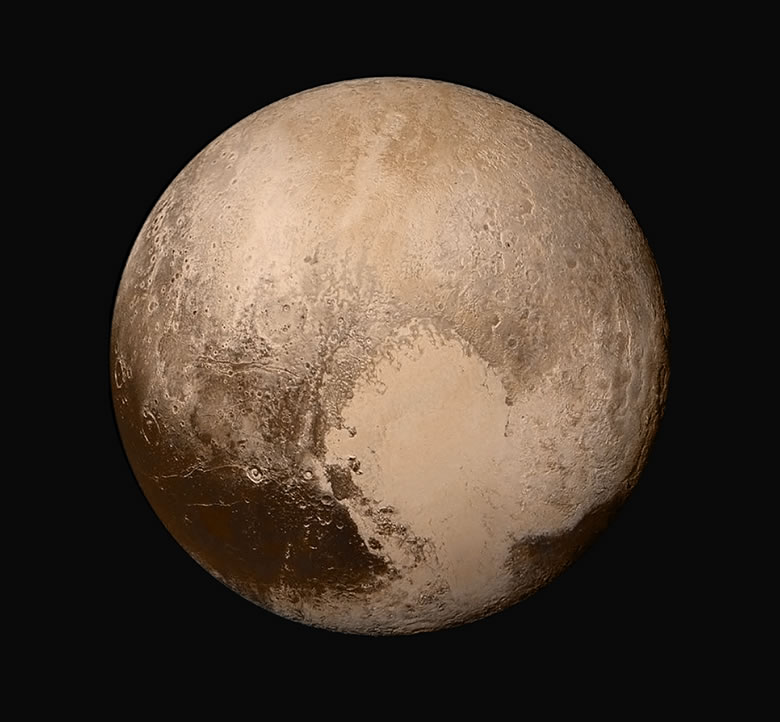
True-color image of Pluto: This enhanced image is thought to show the true color of Pluto's surface. It was created by combining data from four different images obtained while the New Horizon's spacecraft was still about 280,000 miles from Pluto. The smallest features visible on the surface are about 1.4 miles across. Image by NASA, released on July 25, 2015. Enlarge image.
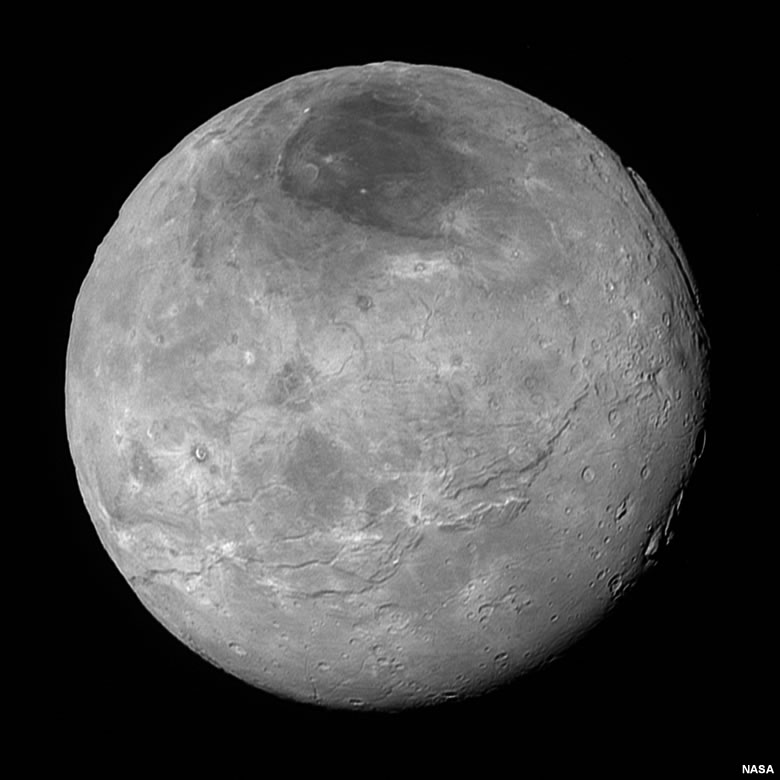
Pluto's moon Charon: This image shows Pluto's moon Charon, about ten hours before NASA's New Horizon close fly-by of Pluto. Charon is about 750 miles in diameter. It displays tectonic fracturing and heavily cratered areas. Image by NASA, acquired on July 14, 2015. Enlarge image.
Find Other Topics on Geology.com:
 | Rocks: Galleries of igneous, sedimentary and metamorphic rock photos with descriptions. |
|
 | Minerals: Information about ore minerals, gem materials and rock-forming minerals. |
|
 | Volcanoes: Articles about volcanoes, volcanic hazards and eruptions past and present. |
|
 | Gemstones: Colorful images and articles about diamonds and colored stones. |
|
 | General Geology: Articles about geysers, maars, deltas, rifts, salt domes, water, and much more! |
|
 | Geology Store: Hammers, field bags, hand lenses, maps, books, hardness picks, gold pans. |
|

|
 | Diamonds: Learn about the properties of diamond, its many uses, and diamond discoveries.
|
|








